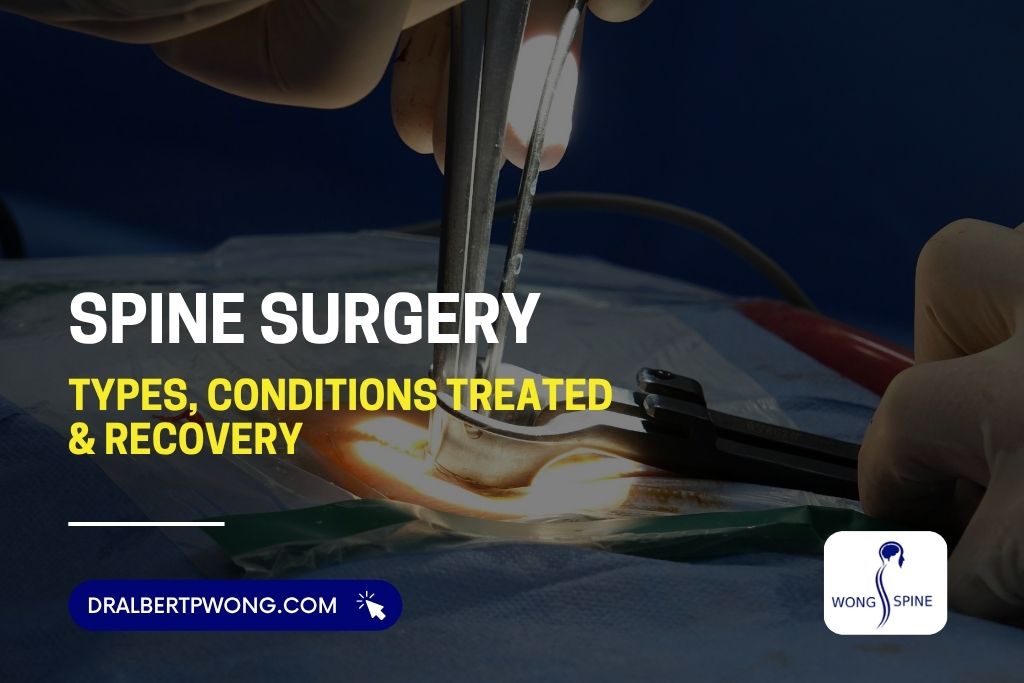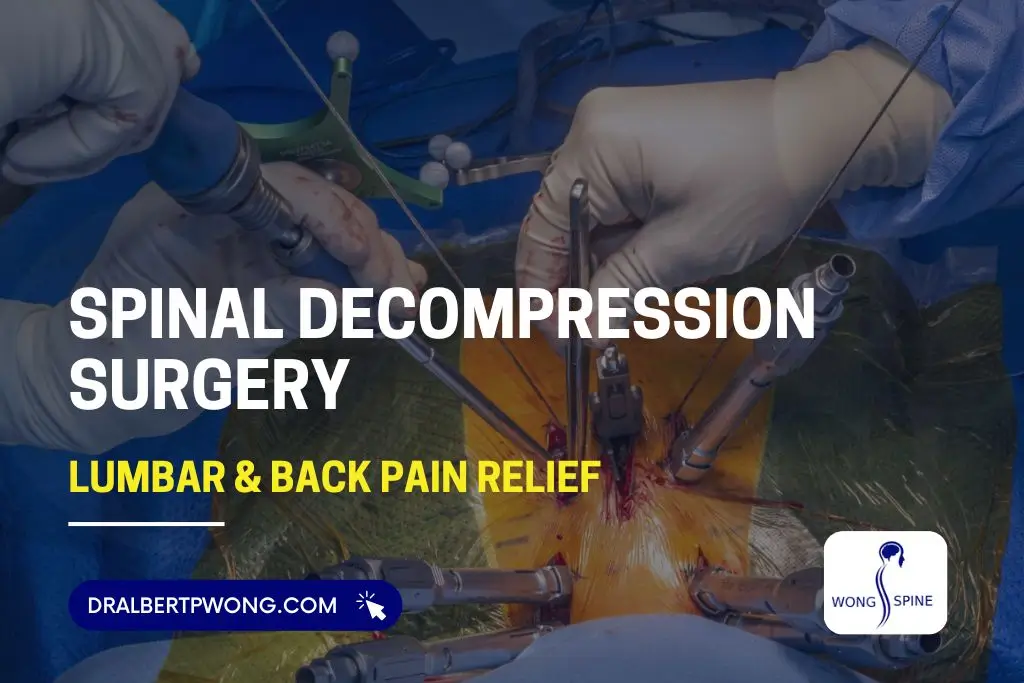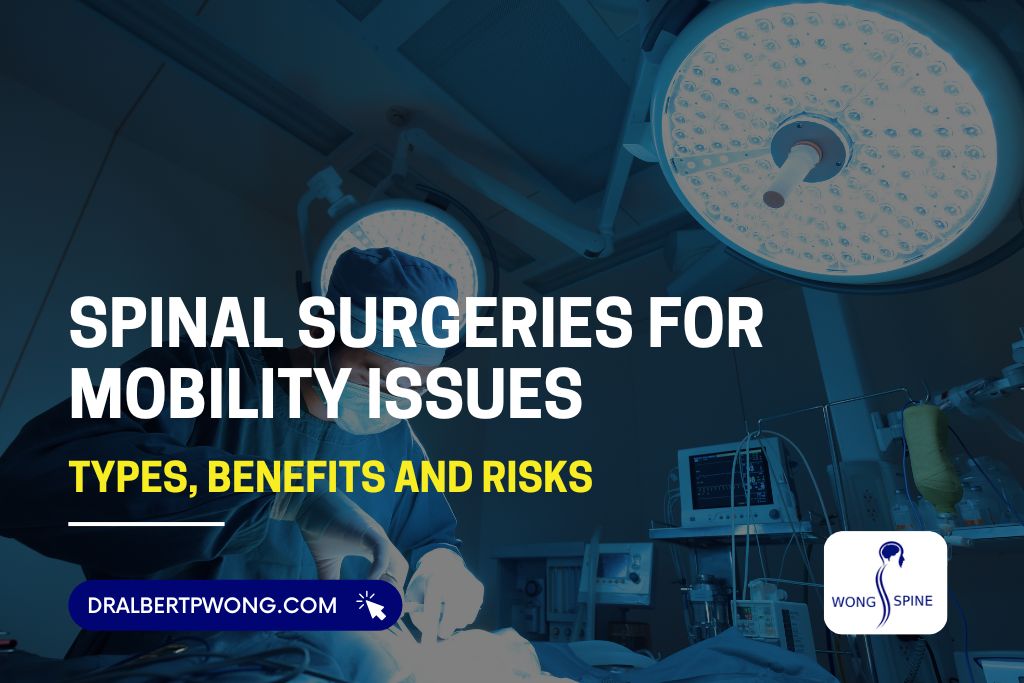Overview
Spine surgery is a procedure used to treat conditions affecting the vertebrae, spinal discs, and nerves. It is usually recommended when nonsurgical treatments, such as medication or physical therapy, do not relieve back pain.
The goal of spine surgery is to reduce pain, improve movement, and restore function. Advanced and minimally invasive techniques are often used to improve precision, speed recovery, and lower the risk of complications.
What Is Spine Surgery?
Spine surgery refers to any procedure performed on the spinal column to correct a problem, relieve pressure, or stabilize the spine. It is usually recommended by a spine specialist after a detailed evaluation and diagnosis.
There are many types of spinal procedures, ranging from repairing a herniated disc to complex surgeries for spinal deformities. The type of surgery depends on the condition, its location, and the patient’s overall health.
Common reasons for spine surgery
- Persistent pain: Severe or chronic back or neck pain that does not improve with nonsurgical treatments.
- Nerve compression: Numbness, tingling, or weakness in the arms or legs caused by pressure on spinal nerves.
- Instability: A spine that has become unstable due to a slipped vertebra (spondylolisthesis) or other degenerative conditions.
- Deformities: Structural issues such as scoliosis (a sideways curve of the spine) that cause pain or limit movement.
- Trauma: Fractures or other serious spinal injuries that require surgical repair.
When to Consider Spine Surgery
Surgery is usually not the first option for back pain. Most spine problems can be treated with conservative methods.
A surgeon may recommend surgery if:
- Pain is severe and limits daily activities.
- Symptoms do not improve with physical therapy, medication, or injections.
- You have progressive numbness, weakness, or other nerve problems.
- There is a spinal deformity or fracture that requires correction.
Each patient receives a thorough evaluation to determine if surgery is the best option. The goal is to improve function and quality of life.
What are the different types of spine surgery?
At specialized spine centers, your surgery is tailored to your condition. Most spine surgeries fall into two main categories: decompression and stabilization. Often, a surgeon may perform both types during a single procedure.
Decompression surgery
Decompression surgery relieves pressure on the spinal nerves or spinal cord. This pressure often causes pain, weakness, or numbness.
Common decompression procedures include:
- Discectomy / Microdiscectomy: Removes part of a herniated or bulging disc pressing on a nerve. A microdiscectomy uses smaller incisions and a microscope.
- Laminectomy: Removes the lamina, the back part of a vertebra, to create space in the spinal canal. It relieves pressure on the spinal cord and nerves and is often used for spinal stenosis.
- Laminotomy: Removes a small portion of the lamina to relieve pressure in a specific area. It is less extensive than a laminectomy.
- Foraminotomy: Enlarges the bony opening (foramen) where a nerve root exits the spinal canal to give the nerve more room.
Stabilization Surgery
Stabilization surgery is performed to limit movement in the spine, which can help relieve pain and provide stability.
- Spinal Fusion: Spinal fusion permanently joins two or more vertebrae. A bone graft and metal hardware hold the bones while they fuse. It is used for spinal instability, spondylolisthesis, and deformities.
- Artificial Disc Replacement (ADR): ADR replaces a damaged disc with an artificial one. It preserves motion at the surgical site and can be an alternative to fusion.
- Vertebroplasty and Kyphoplasty: These procedures treat spinal compression fractures. Bone cement is injected into the vertebra. Kyphoplasty uses a balloon first to restore height before the cement is added.
Minimally invasive vs. traditional open surgery
At advanced spine centers, surgeons perform many procedures using a minimally invasive approach whenever possible.
- Minimally Invasive Spine Surgery (MISS): Small incisions and specialized instruments are used to access the spine through or between muscles. Benefits include less pain, shorter hospital stays, and faster recovery.
- Traditional Open Surgery: A larger incision gives the surgeon a direct view of the spine. This approach is sometimes necessary for complex or extensive procedures.
What to expect before and after spine surgery
Undergoing spine surgery can feel overwhelming. Knowing what to expect can help you prepare. Your surgical team will provide instructions specific to your procedure, but here is a general overview.
Before your surgery
Your healthcare team will ensure you are ready for surgery.
- Pre-operative testing: You may have blood work and imaging to confirm your diagnosis and help plan the procedure.
- Medical clearance: Your surgeon may ask your primary care provider to confirm you are healthy enough for surgery.
- Medication review: Tell your team about all medications and supplements. Some, like blood thinners, may need to be stopped.
- Smoking cessation: If you smoke, you will be encouraged to quit. Smoking can impair healing, especially for fusion procedures.
- Pre-operative instructions: You will get guidance on eating, drinking, and medications on the day of surgery.
After your surgery
Recovery begins immediately after surgery.
- Hospital stay: Your stay may range from a few hours for minimally invasive surgery to several days for complex procedures. Staff will monitor your condition and manage pain.
- Early mobilization: Physical therapy will help you take your first steps safely and teach proper movement.
- Pain management: Medications help control pain so you can participate in recovery and therapy.
- Rehabilitation: Physical therapy strengthens your core and back muscles and restores mobility.
- Recovery at home: Healing continues for weeks to months. Your doctor will provide instructions on activity restrictions, including limits on bending, lifting, and twisting. Gradually increasing activity is important for full recovery.
Risks and benefits of spine surgery
Spine surgery carries risks, as with any surgical procedure. Your surgeon will explain the risks and benefits for your specific condition.
Potential benefits
- Significant pain relief
- Improved function and mobility
- Reduced need for pain medication
- Improved quality of life
Potential risks
- Infection
- Bleeding
- Nerve damage
- Blood clots
- Failure to fuse (in fusion surgery)
- Pain that does not improve
Frequently asked questions about spine surgery
Is spine surgery right for me?
Surgery is not the first choice for most back pain cases. It is considered when:
- Non-surgical treatments have failed. Physical therapy, medication, or injections have not worked.
- A specific condition requires it. Conditions like spinal deformities or severe nerve compression may need surgery to prevent further damage.
- Benefits outweigh the risks. Your surgeon will review potential outcomes to help you make an informed decision.
What can I do to improve my surgical outcome?
Your active participation can improve results.
- Maintain a healthy weight. Reducing stress on your spine can lower complications.
- Stop smoking and using nicotine. Smoking slows bone healing and fusion. Many surgeons require quitting before surgery.
- Manage other health conditions. Keep diabetes and other chronic illnesses under control before surgery.
- Stay active before surgery. Gentle, regular exercise can help speed recovery.
What are the risks of spine surgery?
Spine surgery carries risks like any major operation. Your care team will explain the ones most relevant to you. Risks may include:
- Infection at the surgical site.
- Blood clots.
- Nerve damage, causing numbness or weakness.
- Excessive bleeding.
- Implants moving or failing.
How do I choose the right spine surgeon?
Choosing a surgeon is a personal decision. Consider these factors:
- Experience: Ask about the surgeon’s experience with your condition and procedure.
- Credentials: Make sure the surgeon is board-certified and completed fellowship training in spine surgery.
Communication: Choose a surgeon who listens, answers your questions, and explains treatment options clearly. - Hospital affiliation: Consider the hospital where the surgeon operates. Reputable centers often have advanced equipment and experienced staff.
- Second opinion: A good surgeon welcomes a second opinion to confirm your diagnosis and treatment plan.
Treatment at Spine Wong
At Spine Wong in Los Angeles and Beverly Hills, Albert Wong, MD treats spinal conditions. He evaluates your spine, explains treatment options, and guides your recovery.
The clinic performs procedures like artificial disc replacement and minimally invasive spine surgery. Patients get clear instructions for recovery, follow-ups, and returning to daily activities.
Important: This blog post is for informational purposes only and does not constitute medical advice. Consult with a qualified healthcare professional for a diagnosis and treatment plan.







